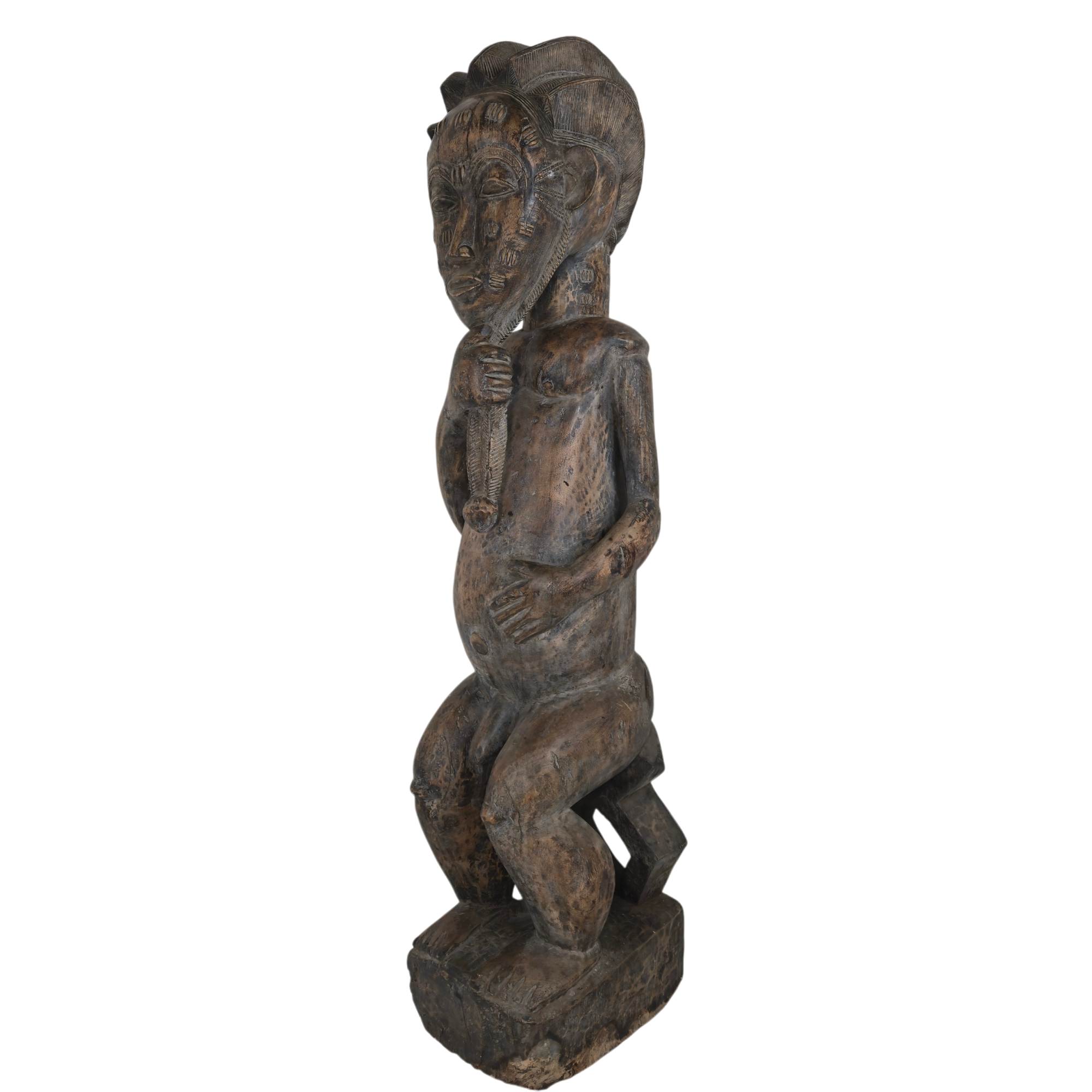Baga
Geographic origin
The Baga people are primarily found along the coastal regions of Lower Guinea, especially between the towns of Boké, Boffa, and Kamsar. They are one of the country’s most emblematic ethnic groups, despite their relatively small population.
Language and affiliation
The Baga speak a language belonging to the Atlantic branch of the Niger-Congo family. Culturally and historically, they are considered close to the Susu, but their artistic traditions are distinct and deeply rooted in ancestral spirituality.
Spirituality and beliefs
Baga spirituality is centered on nature spirits, fertility rites, and ancestor veneration. Before the spread of Islam and Christianity, their religion included complex rituals linked to the seasons, farming cycles, and cosmic harmony. Some villages still preserve traditional rites.
Ritual and ceremonial objects
The Baga are renowned for their monumental masks, particularly the Nimba mask, a large headdress in the shape of a stylized feminine bust. It symbolizes fertility, abundance, and the spirit of the community. Nimba masks are often used during agricultural ceremonies and celebrations of birth or renewal.
Other ceremonial objects include:
-
Snake-shaped masks (associated with protection and rain)
-
Protective figurines
-
Rhythm instruments and headdresses carved in wood
Social and political organization
The Baga are traditionally organized into clan-based communities governed by councils of elders and spiritual leaders. Social cohesion is reinforced by initiatory societies and collective rituals.
Art and aesthetic
Baga art is expressive, massive, and highly symbolic. The proportions are often exaggerated (notably the breasts and heads), reflecting symbolic rather than realistic values. Wood, often dark and heavy, is the preferred material, and the patina of use is essential.
Contemporary life
Today, Baga traditions are evolving in contact with Islam, modern education, and urban migration. However, their heritage remains celebrated for its contribution to African artistic identity, particularly in museums and private collections around the world.
